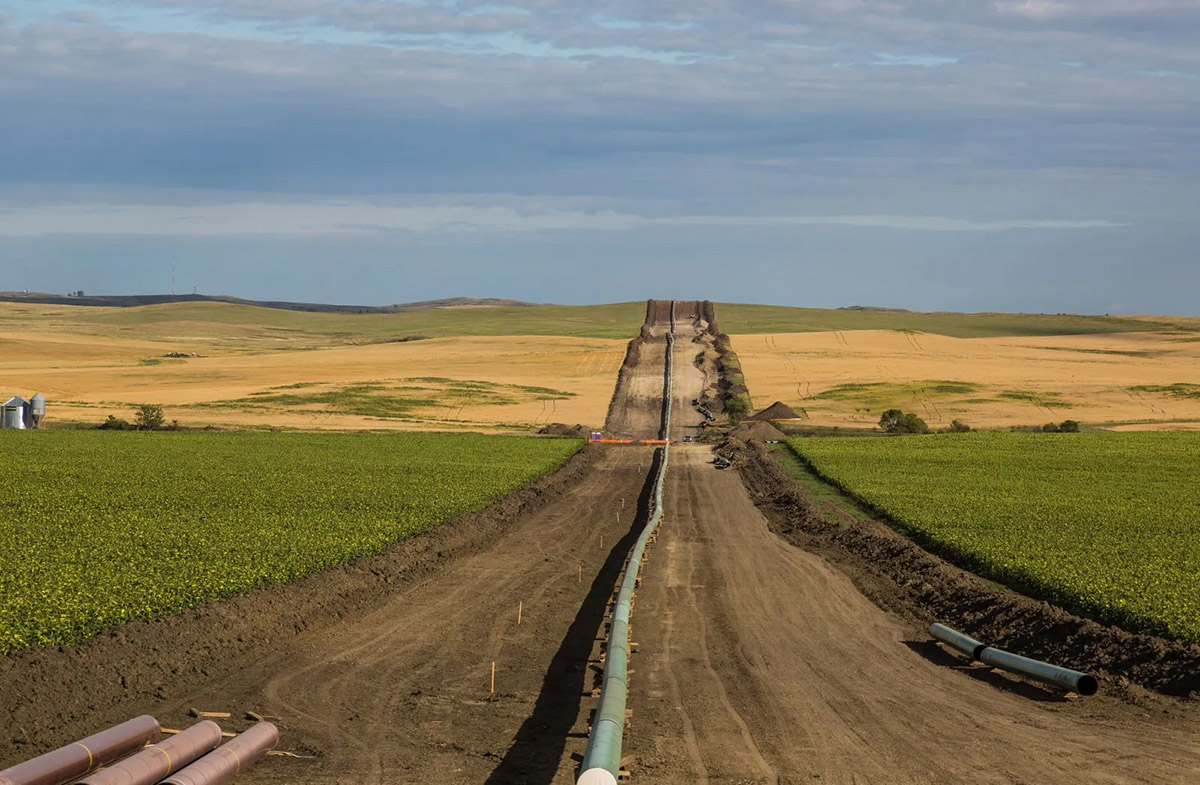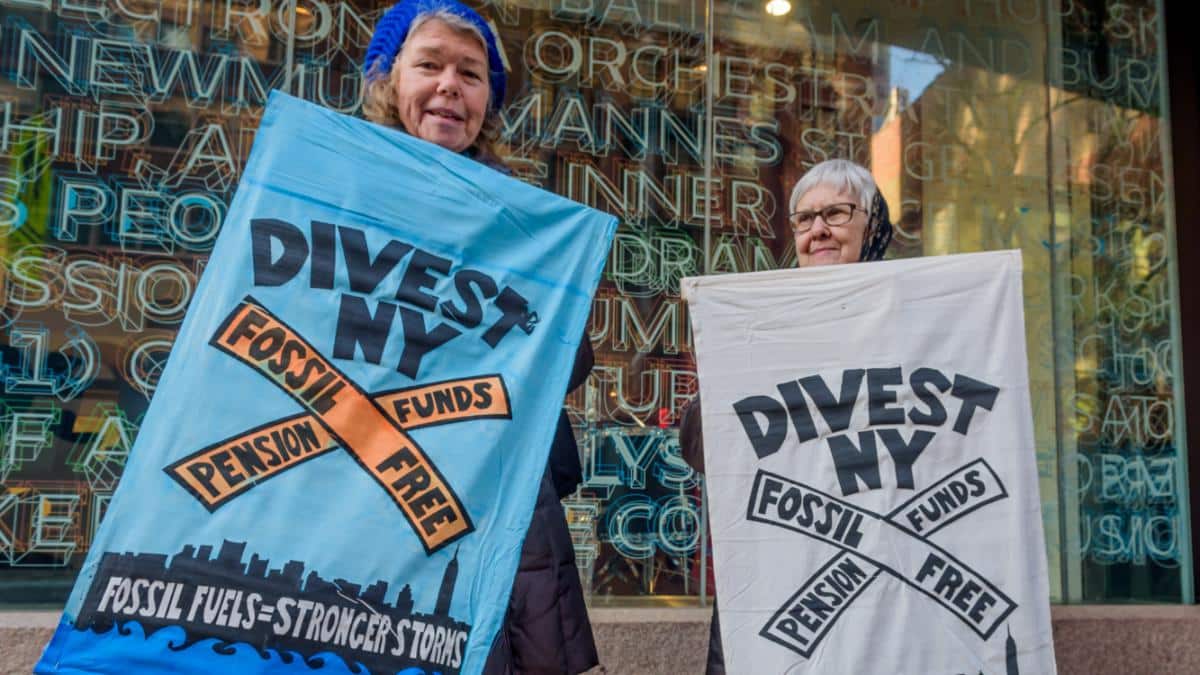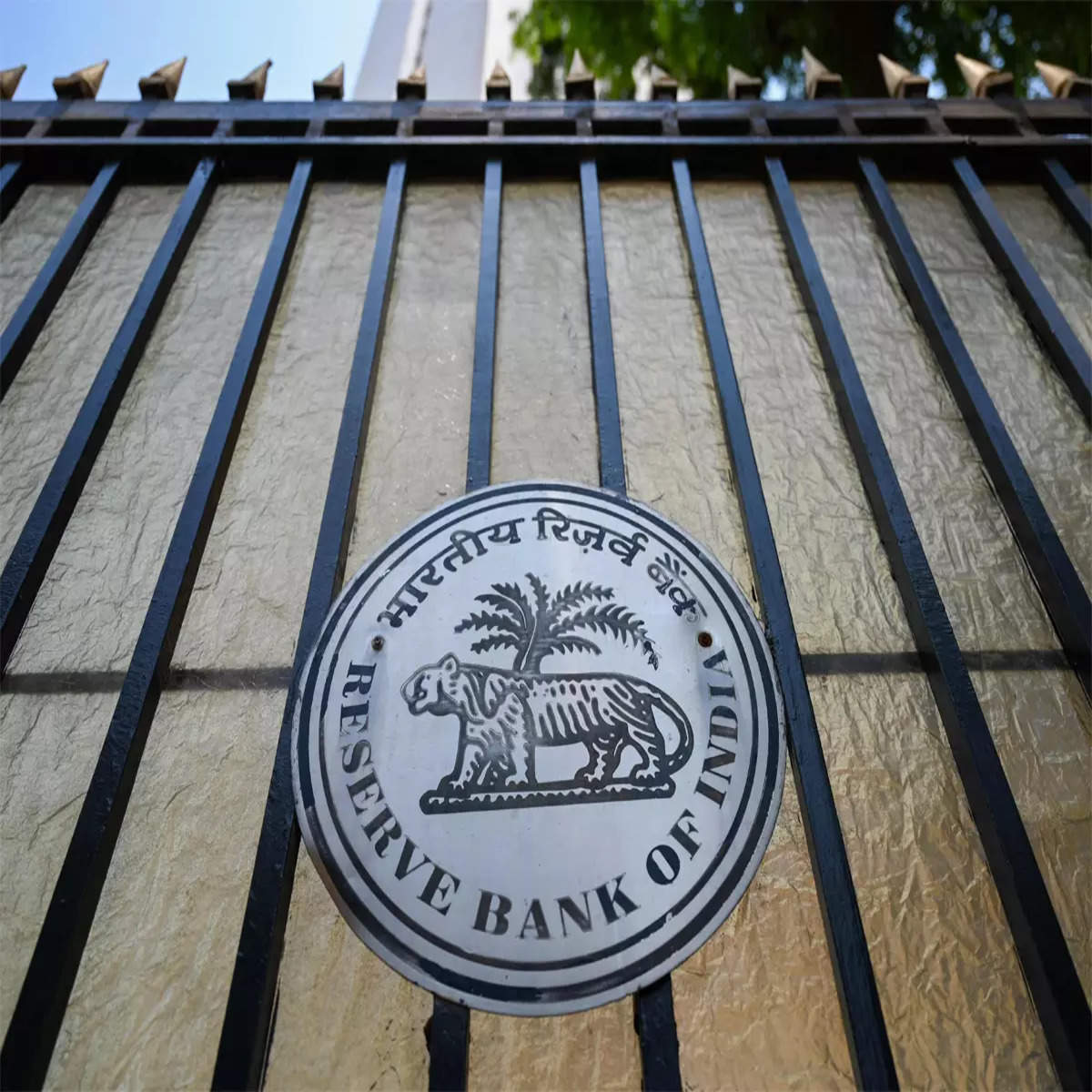Home>Finance>Which Banks Are Funding The Dakota Access Pipeline


Finance
Which Banks Are Funding The Dakota Access Pipeline
Published: December 21, 2023
Discover which banks are providing financial support for the controversial Dakota Access Pipeline
(Many of the links in this article redirect to a specific reviewed product. Your purchase of these products through affiliate links helps to generate commission for LiveWell, at no extra cost. Learn more)
Table of Contents
- Introduction:
- Background on the Dakota Access Pipeline project:
- Environmental concerns and controversy surrounding the project:
- Role of banks in funding the Dakota Access Pipeline:
- List of banks providing financial support for the pipeline:
- Opposition and protests against banks funding the project:
- Response from banks and divestment campaigns:
- Conclusion:
Introduction:
The Dakota Access Pipeline (DAPL) has become a controversial project that has sparked heated debates and protests across the United States. The pipeline, designed to transport crude oil from the Bakken oil fields in North Dakota to Illinois, has been a focal point for environmental activists concerned about its potential impact on indigenous lands, wildlife, and water resources.
While the controversy surrounding the Dakota Access Pipeline project has mainly focused on its environmental implications, there is another important aspect to consider: the role of banks in funding the pipeline’s construction.
Many people are unaware that major financial institutions have played a significant role in the financing of the Dakota Access Pipeline. From multinational banks to regional lenders, these institutions have provided crucial financial support to the project, raising questions about their accountability and commitment to environmental sustainability.
This article aims to shed light on the banks involved in funding the Dakota Access Pipeline and explore the dynamic between their financial interests and the concerns raised by environmental activists and indigenous communities.
Background on the Dakota Access Pipeline project:
The Dakota Access Pipeline project was first announced in 2014 by Energy Transfer Partners, a Texas-based energy company. The proposed pipeline would span approximately 1,172 miles and transport around 470,000 barrels of crude oil per day from North Dakota to Illinois.
The primary motivation behind the pipeline was to provide a more efficient and cost-effective means of transporting oil from the Bakken oil fields to major refining markets. Proponents of the project argued that it would reduce America’s reliance on foreign oil and create job opportunities in the energy sector.
However, the project faced immediate opposition from environmentalists, indigenous communities, and concerned citizens who raised concerns about the potential environmental and social consequences of the pipeline.
One of the key points of controversy was the proposed route of the pipeline, which was originally planned to cross the Missouri River near the Standing Rock Sioux Reservation in North Dakota. This raised concerns about the potential impact on the tribe’s water supply and sacred sites.
Opponents of the pipeline pointed out that any breach or leak in the pipeline could contaminate the Missouri River, which serves as a crucial water source for millions of people downstream. They argued that the project posed a significant risk to local ecosystems, endangered species, and the livelihoods of farmers and ranchers.
Moreover, indigenous communities protested against the lack of consultation and consent in the decision-making process, highlighting the violation of treaty rights and their sovereignty. The opposition grew stronger when construction crews bulldozed sacred burial grounds and cultural artifacts, igniting outrage and attracting international attention.
Despite the ongoing legal battles and protests, construction of the Dakota Access Pipeline was expedited under the Trump administration, and the pipeline became operational in 2017.
The development of the Dakota Access Pipeline has since become a symbol of the ongoing conflicts between energy development, indigenous rights, and environmental protection. It has sparked a broader debate about the prioritization of profits over sustainability and the implications of supporting fossil fuel infrastructure in the face of climate change.
Environmental concerns and controversy surrounding the project:
The Dakota Access Pipeline has been embroiled in controversy due to the significant environmental concerns associated with its construction and operation.
One of the main concerns raised by environmental activists is the potential for oil spills or leaks from the pipeline. The pipeline crosses sensitive ecosystems, including rivers, wetlands, and agricultural lands, which are at risk of contamination in the event of a rupture. The oil transported through the pipeline is highly toxic and difficult to clean up, posing a threat to wildlife, drinking water supplies, and aquatic ecosystems.
Another major environmental concern is the contribution of the pipeline to climate change. The extraction, transportation, and combustion of the fossil fuels carried by the pipeline result in greenhouse gas emissions, exacerbating global warming and its associated environmental and societal impacts.
Furthermore, the construction of the pipeline has led to widespread habitat destruction and disruption of natural ecosystems. Clearing land for the pipeline corridor has led to the loss of wildlife habitats and fragmentation of ecosystems, posing risks to endangered species and biodiversity.
Indigenous communities have also highlighted the impact of the pipeline on their cultural and sacred sites. The construction and operation of the pipeline have resulted in the desecration and destruction of ancestral lands and burial grounds, causing immense cultural and spiritual harm.
The controversy surrounding the Dakota Access Pipeline has also shed light on the broader issue of environmental justice. Critics argue that the project disproportionately affects marginalized communities, including Indigenous peoples and low-income communities, who bear the brunt of environmental harm and health risks from fossil fuel infrastructure.
Efforts to address these environmental concerns and protect communities and ecosystems have been met with resistance, legal challenges, and sometimes violent clashes between protesters and authorities. The Standing Rock Sioux Tribe, along with other Indigenous and environmental groups, filed lawsuits to challenge the pipeline’s approvals and construction processes. Although some legal victories were achieved, the pipeline became operational and continues to transport oil.
The controversy surrounding the Dakota Access Pipeline has sparked a broader conversation about the need to transition to cleaner and more sustainable sources of energy and the importance of indigenous rights and environmental justice in the decision-making processes related to major infrastructure projects.
Role of banks in funding the Dakota Access Pipeline:
One critical aspect of the Dakota Access Pipeline controversy is the involvement of major banks in funding the project. Energy Transfer Partners, the company behind the pipeline, relied on loans and credit from a consortium of financial institutions to finance the construction and operation of the pipeline.
These financial institutions played a significant role in providing the necessary capital for the pipeline to move forward. Their involvement raises questions about the responsibility they hold in supporting projects with potential environmental and social impacts.
Several major multinational banks, including JP Morgan Chase, Wells Fargo, Bank of America, and Citibank, have been identified as key lenders to the Dakota Access Pipeline project. Additionally, regional banks and financial institutions have also been involved in providing financing.
By financing the pipeline, these banks have faced criticism from environmental activists, indigenous groups, and socially responsible investors. The core concern is that by supporting the construction and operation of the pipeline, these banks are implicitly endorsing the potential harm it could cause to the environment, indigenous communities, and the broader public.
Moreover, many of these banks have publicly committed to sustainability and climate goals. Their involvement in financing a project that contributes to fossil fuel dependency and environmental degradation raises questions about the sincerity and effectiveness of these commitments.
The role of banks in funding controversial projects like the Dakota Access Pipeline highlights the tension between financial interests and ethical considerations. On one hand, banks have a duty to their shareholders to pursue profitable investments. However, they also have a responsibility to consider the wider social and environmental impacts of their lending decisions.
Furthermore, the involvement of banks in the Dakota Access Pipeline project demonstrates the interconnectedness and influence of the financial sector on the energy industry. Their role as gatekeepers of capital gives them significant leverage in determining which projects receive funding and ultimately get built.
As public awareness and concern about the environmental and social impacts of fossil fuel projects continue to grow, banks face increasing pressure to align their lending practices with sustainability and climate goals. This pressure has led to a rise in divestment campaigns, with individuals and organizations calling for people to withdraw their funds from banks supporting projects like the Dakota Access Pipeline.
The controversy surrounding the Dakota Access Pipeline has spurred conversations within the banking industry about the need for more robust environmental and social risk assessments, as well as greater transparency and accountability in lending practices. It has also motivated some banks to reevaluate their involvement in similar projects and adopt stricter lending policies related to fossil fuel infrastructure.
List of banks providing financial support for the pipeline:
Several major banks and financial institutions have provided crucial financial support to the Dakota Access Pipeline project. While the extent of their involvement may vary, these institutions have played a significant role in funding the construction and operation of the pipeline.
Here is a list of some of the notable banks that have provided financing for the Dakota Access Pipeline:
- JP Morgan Chase: As one of the largest banks in the United States, JP Morgan Chase has been a major lender to the Dakota Access Pipeline project. It has provided significant loans and credit facilities to Energy Transfer Partners, enabling the construction and completion of the pipeline.
- Wells Fargo: Wells Fargo has also been a key player in financing the pipeline. Through loans and credit extensions, the bank has contributed to the funding necessary for the pipeline’s development. The bank’s involvement has attracted criticism and led to divestment campaigns targeting Wells Fargo.
- Bank of America: Bank of America has provided financing to the Dakota Access Pipeline project, supporting its construction and operation. The bank’s involvement has been subject to scrutiny, as it raises questions about the alignment of its lending practices with its stated commitment to sustainability.
- Citibank: Citibank, a multinational banking and financial services corporation, has been identified as one of the banks involved in financing the Dakota Access Pipeline. Similar to other banks on this list, Citibank’s support for the project has sparked criticism from environmental advocates and indigenous groups.
- US Bank: US Bank has also been linked to financing the Dakota Access Pipeline. This regional bank’s involvement has faced backlash from customers and activists concerned about the potential impacts of the pipeline on water resources and indigenous rights.
While these banks have faced the most scrutiny for their involvement, it’s important to note that other financial institutions, both large and small, have also provided financial support to the Dakota Access Pipeline project. This includes regional banks, investment firms, and international lenders.
The participation of these banks in funding the Dakota Access Pipeline has triggered public outrage and led to campaigns encouraging individuals and organizations to divest from these institutions. The intention behind divestment is to exert pressure on banks to reconsider their support for environmentally and socially contentious projects.
It is worth noting that some banks have made efforts to address these concerns and reconsider their investment strategies. For instance, in response to the controversy surrounding the Dakota Access Pipeline, some banks have revised their lending policies to include stricter environmental and social guidelines.
However, the continued financial support from banks indicates the complex dynamics that exist between financial institutions, energy companies, and the need for sustainable and responsible investment practices.
As public awareness and pressure on banks continue to grow, the role of banks in funding controversial projects like the Dakota Access Pipeline remains an ongoing debate in the finance and environmental communities.
Opposition and protests against banks funding the project:
The involvement of banks in funding the Dakota Access Pipeline has been met with widespread opposition and sparked protests from environmental activists, Indigenous communities, and concerned citizens.
One of the primary reasons for the opposition is the perceived contradiction between the banks’ financing of the pipeline and their commitments to environmental sustainability. Many of these banks have publicly stated their support for climate action and their efforts to promote a transition to renewable energy sources. However, their funding of the Dakota Access Pipeline, a project that promotes the extraction and transportation of fossil fuels, has been seen as incongruent with these commitments.
The protests against the banks funding the project have taken various forms, including demonstrations, divestment campaigns, and direct action. Activists have organized rallies and marches outside bank headquarters, highlighting the financial institutions’ role in supporting a project that potentially threatens the environment, water sources, and indigenous rights.
Indigenous communities and their allies have been at the forefront of the opposition, arguing that the construction of the pipeline violates their treaty rights and poses a significant risk to their ancestral lands and sacred sites. They have formed alliances with environmental organizations and other social justice groups to amplify their voices and fight against the banks’ involvement.
One notable form of protest has been divestment campaigns, urging individuals and institutions to withdraw their financial support from banks funding the Dakota Access Pipeline. The aim of divestment is to put economic pressure on the banks, compelling them to reconsider their involvement in controversial projects and align their actions with the values of their stakeholders.
Alongside organized efforts, there have been instances of direct action and physical protests. This includes encampments, blockades, and acts of civil disobedience to disrupt construction activities and draw attention to the concerns surrounding the pipeline’s development and its financial backers.
The protests and opposition against banks funding the Dakota Access Pipeline have received significant media coverage and public attention, thrusting the issue into the national and international spotlight. Celebrities, public figures, and grassroots organizations have lent their support to the cause, increasing visibility and amplifying the voices of those impacted.
The opposition and protests against banks funding the project have fueled public discourse on the role of financial institutions in promoting sustainability and ethical investment. They have also sparked debates around the impacts of fossil fuel infrastructure projects, indigenous rights, and the broader implications for the transition to a more sustainable and equitable energy system.
While the pipeline has become operational, the opposition movements and protests indicate a growing demand for more responsible and sustainable investment practices. The focus on banks’ funding decisions demonstrates the increasing scrutiny and accountability that financial institutions are facing in relation to their support for environmentally and socially contentious projects like the Dakota Access Pipeline.
Response from banks and divestment campaigns:
The involvement of banks in funding the Dakota Access Pipeline has prompted varied responses from both the financial institutions and those advocating for divestment from these banks.
Initially, many of the banks that provided financial support for the Dakota Access Pipeline defended their decisions, stating that their involvement was based purely on financial considerations and that they followed rigorous due diligence processes. They argued that their lending practices are separate from the environmental and social impacts of the projects they finance.
However, as public pressure mounted and the controversy surrounding the pipeline intensified, some banks started to respond to the concerns raised by their customers, activists, and socially responsible investors.
Several banks issued statements acknowledging the sensitivities surrounding the Dakota Access Pipeline and expressing their commitment to engaging with stakeholders and addressing the concerns raised. Some banks pledged to review their lending policies and strengthen their environmental and social risk assessments to ensure more responsible investment practices in the future.
In response to the involvement of banks funding the Dakota Access Pipeline, divestment campaigns began to gain momentum. These campaigns urged individuals, organizations, and even municipalities to withdraw their financial support from these banks as a way to hold them accountable for their role in supporting controversial projects.
Divestment movements sought to create financial pressure on the banks, aiming to influence their lending practices and promote a shift towards more sustainable investments. The campaigns encouraged individuals and institutions to redirect their investments and banking relationships towards institutions that prioritize environmental and social responsibility.
Divestment efforts against the banks involved in funding the pipeline gained considerable attention and support. Numerous organizations, including foundations, universities, pension funds, and individuals, announced their divestment from these banks. The divestment movement sent a clear message that financial support for projects that undermine environmental sustainability and indigenous rights would not be tolerated.
As a response to the divestment campaigns, some banks took steps to address the concerns raised by modifying their policies or initiating dialogues with activists and indigenous communities. Some institutions committed to explicit restrictions on financing projects that could harm the environment or infringe on the rights of Indigenous people.
While the response from banks to the divestment campaigns has been mixed, the movement has had a tangible impact on the industry. It has brought greater attention and scrutiny to the ethical and environmental implications of banks’ lending practices, compelling institutions to reevaluate their investment decision-making processes and consider the long-term sustainability risks associated with their financing activities.
Overall, the response from banks to the controversy surrounding the Dakota Access Pipeline has varied, ranging from initial defense of their lending practices to more recent efforts to address the concerns raised. Divestment campaigns have driven the conversation forward and played a crucial role in pressuring banks to reconsider their involvement in similar controversial projects and align their actions with the demands of their stakeholders.
Conclusion:
The Dakota Access Pipeline project has been a lightning rod for controversy, drawing attention to the role of banks in financing environmentally and socially problematic projects. While the pipeline became operational, the opposition it faced highlights the increasing importance of environmental sustainability, indigenous rights, and responsible investment practices.
The involvement of major banks in funding the Dakota Access Pipeline has sparked outrage and protests from environmental activists, indigenous communities, and concerned citizens. Critics argue that by supporting the pipeline, these banks are disregarding their commitments to environmental sustainability and contributing to the adverse environmental and social impacts of fossil fuel infrastructure.
Protests and divestment campaigns have brought significant attention to the banks’ role in funding the pipeline. The calls for divestment aim to exert financial pressure on the banks, prompting them to reassess their investment decisions and prioritize sustainability and social responsibility in their lending practices.
The response from banks has been mixed, ranging from initial defense of their financing decisions to subsequent statements expressing openness to dialogue and reassessment of lending policies. While some banks have taken steps towards strengthening their environmental and social risk assessments, the question of aligning financial interests with sustainable and ethical practices remains an ongoing challenge.
Ultimately, the controversy surrounding the Dakota Access Pipeline has raised public awareness about the role of banks in shaping the energy landscape and how their funding decisions can have profound environmental, social, and human rights implications. It has also underscored the need for greater transparency, accountability, and consideration of sustainability factors in the banking industry.
The opposition, protests, and divestment campaigns have served as catalysts for change, pushing banks and financial institutions to address the concerns raised and re-evaluate their investments in environmentally contentious projects. The movement towards more responsible and sustainable investment practices is gaining momentum, driven by the demands of communities, consumers, and investors for a transition to a greener and more equitable future.
Ultimately, the controversy surrounding the Dakota Access Pipeline serves as a powerful reminder that the financial sector plays a pivotal role in shaping the trajectory of energy development and its impacts on the environment and communities. The choices made by banks regarding their investments have ripple effects that extend far beyond their balance sheets. As the world faces pressing environmental challenges, the actions of banks and their commitments to environmental and social responsibility will play a significant role in shaping a more sustainable and resilient future.














